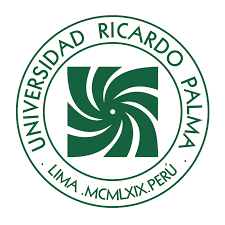Evaluation of exposure to Wi-Fi radiofrequency fields in indoor and outdoor environments in the Ricardo Palma University campus, Lima, Peru, using a personal exposimeter
DOI:
https://doi.org/10.31381/perfilesingenieria.v20i21.6726Palabras clave:
electromagnetic field, non-ionizing radiation, radiofrequency field, exposimeter, microenvironmentResumen
The objective of this study was to make an evaluation of Wi-Fi radiofrequency fields in campus of Ricardo Palma University in the Surco district, Lima, Perú using personal exposure meters. To carried it out a literature review was first made, then the location of the environments was defined. In total 96 outdoor and 10 indoor environments were selected. Subsequently, the exposure meter including the proprietary software for data processing was tested. The maximum contribution of Wi-Fi 2G and Wi-Fi 5G for outdoor environments by main frequency bands to average exposure were 1.83 x 10-6 and 3.39 x10-5 W/m2 respectively and the maximum contribution of Wi-Fi 2G and Wi-Fi 5G for indoor environments by main frequency bands to average exposure were 1.33 x 10-6 and 2.96 x10-6 W/m2 respectively. Based on the ICNIRP 1998 limits, the exposure quotients were also obtained the maximum contribution of Wi-Fi 2G and Wi-Fi 5G for outdoor environments by main frequency bands to average exposure were 1.83 x 10-5 and 3.39 x10-4 % respectively and the maximum contribution of Wi-Fi 2G and Wi-Fi 5G for indoor environments by main frequency bands to average exposure were 1.33 x 10-5 and 2.96 x10-5 W/m2 respectively. In conclusion, all measurements made were well below international limits, for outdoor and indoor environments the largest contributor to total exposure was broadcasting services, the second largest were mobile phone base stations, for outdoor environments the third largest was Wi-Fi 5G and mobile phone handsets exposure was well below that of mobile phone base stations and for indoor environments the third largest was mobile handsets and the last one was Wi-Fi.
Descargas
Citas
PUNKU, “Reportes. Reportes por servicios. Servicio de Internet,” 2023.
ITU/UN tech agency, “Measuring Digital Development - Facts and Figures 2023 - ITU Hub.”
S. Aït-Aïssa et al., “In situ detection of gliosis and apoptosis in the brains of young rats exposed in utero to a Wi-Fi signal,” C R Phys, vol. 11, no. 9–10, pp. 592–601, Nov. 2010, doi: 10.1016/j.crhy.2010.10.005.
S. Aït‐Aïssa et al., “In utero and early‐life exposure of rats to a Wi‐Fi signal: Screening of immune markers in sera and gestational outcome,” Bioelectromagnetics, vol. 33, no. 5, pp. 410–420, Jul. 2012, doi: 10.1002/bem.21699.
S. Aït-Aïssa et al., “In Situ Expression of Heat-Shock Proteins and 3-Nitrotyrosine in Brains of Young Rats Exposed to a WiFi Signal In Utero and In Early Life,” Radiat Res, vol. 179, no. 6, pp. 707–716, Jun. 2013, doi: 10.1667/RR2995.1.
H. Bektas, S. Dasdag, and M. S. Bektas, “Comparison of effects of 2.4 GHz Wi-Fi and mobile phone exposure on human placenta and cord blood,” Biotechnology & Biotechnological Equipment, vol. 34, no. 1, pp. 154–162, Jan. 2020, doi: 10.1080/13102818.2020.1725639.
S. Dasdag, M. Taş, M. Z. Akdag, and K. Yegin, “Effect of long-term exposure of 2.4 GHz radiofrequency radiation emitted from Wi-Fi equipment on testes functions,” Electromagn Biol Med, vol. 34, no. 1, pp. 37–42, Jan. 2015, doi: 10.3109/15368378.2013.869752.
S. Shokri, A. Soltani, M. Kazemi, D. Sardari, and F. B. Mofrad, “Effects of Wi-Fi (2.45 GHz) Exposure on Apoptosis, Sperm Parameters and Testicular Histomorphometry in Rats: A Time Course Study,” Cell J, vol. 17, no. 2, pp. 322–331, 2015.
International Commission on Non-Ionizing Radiation Protection, “Guidelines for Limiting Exposure to Electromagnetic Fields (100 kHz to 300 GHz),” Health Phys, vol. 118, no. 5, pp. 483–524, May 2020, doi: 10.1097/HP.0000000000001210.
International Commission on Non-Ionizing Radiation Protection (ICNIRP), “Guidelines for limiting exposure to time-varying electric, magnetic, and electromagnetic fields (up to 300 GHz). International Commission on Non-Ionizing Radiation Protection.,” Health Phys, vol. 74, no. 4, pp. 494–522, Apr. 1998.
IEEE, “IEEE Standard for Safety Levels with Respect to Human Exposure to Radio Frequency Electromagnetic Fields, 3 kHz to 300 GHz,” IEEE Std C95.1-1991, pp. 1–76, 1992, doi: 10.1109/IEEESTD.1992.101091.
International Telecommunication Union, “Guidance on complying with limits for human exposure to electromagnetic fields,” no. K.52 (06/2021). pp. 1–44, 2021. [Online]. Available: https://handle.itu.int/11.1002/1000/14724-en?locatt=format:pdf&auth
Ministerio de Transportes y Comunicaciones, “Decreto Supremo n.° 038-2003-MTC.” [Online]. Available: https://www.gob.pe/institucion/mtc/normas-legales/308749-038-2003-mtc
J. Tomitsch, E. Dechant, and W. Frank, “Survey of electromagnetic field exposure in bedrooms of residences in lower Austria,” Bioelectromagnetics, vol. 31, no. 3, pp. 200–208, Apr. 2010, doi: 10.1002/bem.20548.
L. Verloock, W. Joseph, F. Goeminne, L. Martens, M. Verlaek, and K. Constandt, “Temporal 24-hour assessment of radio frequency exposure in schools and homes,” Measurement, vol. 56, pp. 50–57, Oct. 2014, doi: 10.1016/J.MEASUREMENT.2014.06.012.
R. Ramirez-Vazquez, I. Escobar, A. Thielens, and E. Arribas, “Measurements and Analysis of Personal Exposure to Radiofrequency Electromagnetic Fields at Outdoor and Indoor School Buildings: A Case Study at a Spanish School,” IEEE Access, vol. 8, pp. 195692–195702, 2020, doi: 10.1109/ACCESS.2020.3033800.
R. Ramirez-Vazquez et al., “Georeferencing of Personal Exposure to Radiofrequency Electromagnetic Fields from Wi-Fi in a University Area,” Int J Environ Res Public Health, vol. 17, no. 6, p. 1898, Mar. 2020, doi: 10.3390/ijerph17061898.
V. Cruz Ornetta et al., “Evaluación de radiaciones no ionizantes de la red Wi-Fi en la Universidad Nacional Mayor de San Marcos,” Theorēma (Lima, Segunda época, En línea), no. 3, pp. 119–132, Jun. 2016, [Online]. Available: https://revistasinvestigacion.unmsm.edu.pe/index.php/Theo/article/view/11982
S. Sagar, B. Struchen, V. Finta, M. Eeftens, and M. Röösli, “Use of portable exposimeters to monitor radiofrequency electromagnetic field exposure in the everyday environment,” Environ Res, vol. 150, pp. 289–298, Oct. 2016, doi: 10.1016/j.envres.2016.06.020.
Techpedia, “Redes inalámbricas.” [Online]. Available: https://techpedia.fel.cvut.cz/html/frame.php?oid=9&pid=1003&finf=
E. G. Del Olmo, “Red ad hoc inalámbrica: qué es, cómo crearla, usos y características.” Apr. 2023. [Online]. Available: https://www.internetizado.com/red-ad-hoc
International Telecommunication Union, “Recommendation ITU-R M.1450-5 Characteristics of broadband radio local area networks,” Apr. 2014. [Online]. Available: https://www.itu.int/rec/recommendation.asp?lang=en&parent=R-REC-M.1450-5-201404-I
IARC Working Group on the Evaluation of Carcinogenic Risks to Humans, “Non-ionizing radiation, Part 2: Radiofrequency electromagnetic fields.,” IARC Monogr Eval Carcinog Risks Hum, vol. 102, no. Pt 2, pp. 1–460, 2013.
World Health Organization, Establishing a Dialogue on Risks from Electromagnetic Fields. World Health Organization, 2002.
R. Ramirez-Vazquez, I. Escobar, A. Martinez-Plaza, and E. Arribas, “Comparison of personal exposure to Radiofrequency Electromagnetic Fields from Wi-Fi in a Spanish university over three years,” Science of The Total Environment, vol. 858, p. 160008, Feb. 2023, doi: 10.1016/J.SCITOTENV.2022.160008.
R. Aminzadeh et al., “On-body calibration and measurements using personal radiofrequency exposimeters in indoor diffuse and specular environments,” Bioelectromagnetics, vol. 37, no. 5, pp. 298–309, Apr. 2016.
C. R. Bhatt, M. Redmayne, B. Billah, M. J. Abramson, and G. Benke, “Radiofrequency-electromagnetic field exposures in kindergarten children,” J Expo Sci Environ Epidemiol, vol. 27, no. 5, pp. 497–504, Sep. 2017, doi: 10.1038/jes.2016.55.
C. R. Bhatt, S. Henderson, C. Brzozek, and G. Benke, “Instruments to measure environmental and personal radiofrequency-electromagnetic field exposures: an update,” Phys Eng Sci Med, vol. 45, no. 3, pp. 687–704, Sep. 2022, doi: 10.1007/s13246-022-01146-y.
L. E. Birks et al., “Spatial and temporal variability of personal environmental exposure to radio frequency electromagnetic fields in children in Europe,” Environ Int, vol. 117, pp. 204–214, Aug. 2018, doi: 10.1016/j.envint.2018.04.026.
MVG, “EME Spy Evolution : Public RF Safety.” [Online]. Available: https://www.mvg-world.com/en/products/rf-safety/public-rf-safety/eme-spy-evolution
Publicado
Cómo citar
Número
Sección
Licencia
Derechos de autor 2024 Víctor Cruz Ornetta, Jorge Ubillús Gonzales, Julio González Prado, Milton Marcelo Peña Calero, Manuel Enrique Isaías Pardo Rendon

Esta obra está bajo una licencia internacional Creative Commons Atribución 4.0.
En caso de que el manuscrito sea aprobado para su próxima publicación, los autores conservan los derechos de autor y ceden a la revista el derecho de la publicación, edición, reproducción, distribución, exhibición y comunicación en el país de origen, así como en el extranjero, mediante medios impresos y electrónicos en diferentes bases de datos. Por lo tanto, se establece que después de la publicación de los artículos, los autores pueden realizar otro tipo de acuerdos independientes o adicionales para la difusión no exclusiva de la versión del artículo publicado en la presente revista (publicación en libros o repositorios institucionales), siempre que se indique explícitamente que el trabajo se ha sido publicado por primera vez en esta revista.
Para que quede constancia de este procedimiento, el autor debe llenar los siguientes formatos:

1.png)








